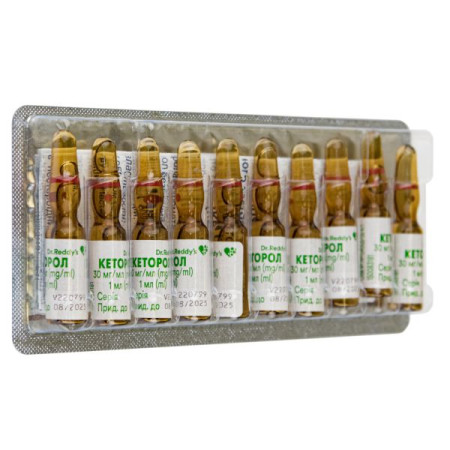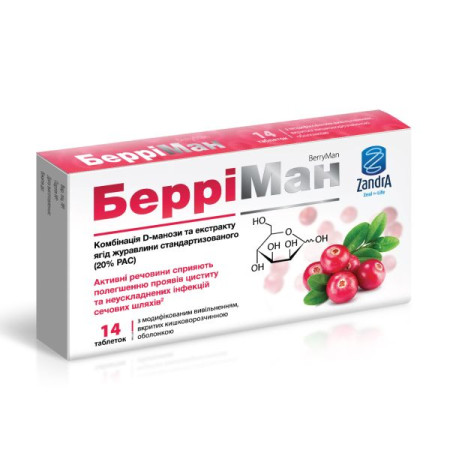Nurofen Cold & Flu tablets No. 12

Instructions for Nurofen Cold & Flu tablets No. 12
Composition
active ingredient:
ibuprofen, phenylephrine hydrochloride;
1 film-coated tablet contains ibuprofen 200 mg, phenylephrine hydrochloride 5 mg;
excipients:
hypromellose, microcrystalline cellulose, magnesium stearate, sodium starch glycolate (type A), talc, hypromellose;
shell: mastercoat yellow FA 0156, black ink S-1277001 Black (for applying the logo).
Dosage form
Film-coated tablets.
Yellow, round, biconvex, film-coated tablets with a black identification logo printed on one side.
Pharmacotherapeutic group
Preparations for the treatment of the musculoskeletal system, anti-inflammatory and antirheumatic drugs, non-steroidal drugs, propionic acid derivatives. Ibuprofen, combinations.
ATX code M01AE51.
Pharmacological properties
Pharmacodynamics
Ibuprofen
Ibuprofen is a derivative of propionic acid and its mechanism of action is based on the inhibition of prostaglandin synthesis. Ibuprofen has analgesic, anti-inflammatory and antipyretic properties. In addition, ibuprofen reversibly inhibits platelet aggregation.
The therapeutic effect of ibuprofen for symptoms associated with colds and flu lasts up to 8 hours.
Experimental data suggest that ibuprofen may competitively inhibit the effect of low-dose aspirin (acetylsalicylic acid) on platelet aggregation when these drugs are used concomitantly. Some pharmacodynamic studies have shown that single doses of ibuprofen 400 mg administered 8 hours before or 30 minutes after immediate-release aspirin (81 mg) reduced the effect of aspirin (acetylsalicylic acid) on thromboxane formation or platelet aggregation. Although there is uncertainty about the extrapolation of these data to the clinical situation, it cannot be excluded that regular long-term use of ibuprofen may reduce the cardioprotective effect of low-dose acetylsalicylic acid. Such a clinically significant effect is considered unlikely with non-systematic use of ibuprofen.
Phenylephrine
Phenylephrine is a postsynaptic alpha-receptor agonist with low stimulation of cardiovascular beta-receptors and minimal central effects.
It is a recognized decongestant that relieves swelling and nasal congestion by constricting blood vessels.
Pharmacokinetics
Ibuprofen
After administration, ibuprofen is rapidly absorbed and distributed throughout the body. Renal excretion is rapid and complete.
Maximum plasma concentrations are reached 45 minutes after oral administration in the fasted state. When taken with food, peak levels are observed after 1-2 hours. This time may vary depending on the different dosage forms.
The half-life is approximately 2 hours.
In limited studies, ibuprofen has been found in breast milk in very low concentrations.
Phenylephrine
Phenylephrine is absorbed from the gastrointestinal tract, but bioavailability is reduced when administered orally due to presystemic metabolism.
After oral administration, it retains activity as a decongestant, being delivered through the systemic circulation to the vessels of the nasal mucosa.
When taken orally as a nasal decongestant, phenylephrine is taken at intervals of 4-6 hours.
Combination of ibuprofen and phenylephrine
The ibuprofen in this medicine (ibuprofen 200 mg and phenylephrine hydrochloride 5 mg) is absorbed more quickly than standard ibuprofen 200 mg in tablet form, with therapeutic levels being reached in 26.4 minutes, compared to 55.2 minutes for standard ibuprofen.
Indication
For the relief of cold and flu symptoms without causing drowsiness: headache, sore throat, body aches and pains, runny nose, nasal and sinus congestion, fever.
Contraindication
Hypersensitivity to ibuprofen, phenylephrine or any of the excipients of the drug.
History of hypersensitivity reactions (e.g. asthma, rhinitis, angioedema or urticaria) following the use of aspirin or other non-steroidal anti-inflammatory drugs (NSAIDs).
History of active or recurrent gastric or duodenal ulcer/bleeding (two or more severe episodes of confirmed ulceration or bleeding).
History of gastrointestinal bleeding or perforation associated with the use of NSAIDs.
Hypertensive disease and severe ischemic heart disease or cardiovascular disorder.
Severe heart failure (NYHA class IV), renal failure or hepatic failure.
The last trimester of pregnancy.
Use with other NSAIDs, including selective cyclooxygenase-2 inhibitors.
Hyperthyroidism.
Do not use with monoamine oxidase inhibitors (MAOIs) and within 2 weeks after discontinuing their use.
Do not use in patients with prostatic hypertrophy.
Interaction with other medicinal products and other types of interactions
Monoamine oxidase inhibitors (MAOIs): The interaction of sympathomimetic amines such as phenylephrine hydrochloride with monoamine oxidase inhibitors causes a hypertensive effect.
This medicine should not be used in combination with
Aspirin (acetylsalicylic acid): It is generally not recommended to use ibuprofen with acetylsalicylic acid due to the potential increase in adverse reactions, unless low-dose aspirin (no more than 75 mg per day) has been prescribed by a doctor.
Experimental data suggest that when used concomitantly with ibuprofen, it may competitively inhibit the effect of low-dose aspirin (acetylsalicylic acid) on platelet aggregation. Although there is uncertainty about the extrapolation of these data to the clinical situation, it cannot be excluded that regular long-term use of ibuprofen may reduce the cardioprotective effect of low-dose acetylsalicylic acid. With non-systematic use of ibuprofen, such a clinically significant effect is considered unlikely.
other NSAIDs, including selective cyclooxygenase-2 inhibitors: the simultaneous use of two or more NSAIDs should be avoided, as this may increase the risk of adverse reactions.
This drug should be used with caution in combination with other medications:
NSAIDs may potentiate the effect of anticoagulants such as warfarin; antihypertensives (ACE inhibitors and angiotensin II antagonists) and diuretics: NSAIDs may reduce the effect of these drugs. In some patients with impaired renal function (e.g. dehydrated patients or elderly patients with compromised renal function), the concomitant use of an ACE inhibitor or angiotensin II antagonist and drugs that inhibit COX may lead to further deterioration of renal function, including possible acute renal failure, which is usually reversible. These interactions should be considered when patients are receiving coxibs concomitantly with ACE inhibitors or angiotensin II antagonists. Therefore, such combinations should be prescribed with caution, especially in elderly patients. Patients should be adequately hydrated and renal function should be monitored at the beginning of the combination treatment and periodically thereafter. Diuretics may increase the risk of nephrotoxicity. Phenylephrine may reduce the effectiveness of beta-blockers and other antihypertensive drugs with an increased risk of arterial hypertension and other adverse reactions from the cardiovascular system; corticosteroids: increased risk of ulcers or bleeding in the gastrointestinal tract; antiplatelet agents and selective serotonin reuptake inhibitors: increased risk of gastrointestinal bleeding; digoxin and cardiac glycosides: NSAIDs may exacerbate heart failure, reduce renal filtration function and increase plasma glycoside levels; simultaneous use of phenylephrine leads to heart rhythm disturbances or myocardial infarction; tricyclic antidepressants (e.g. amitriptyline) may increase the risk of adverse reactions of phenylephrine in the presence of cardiovascular disease; Sympathomimetics: simultaneous use with phenylephrine increases the risk of adverse reactions from the cardiovascular system; Lithium: there is evidence of a potential increase in lithium plasma levels; Methotrexate: there is evidence of a potential increase in drug plasma levels; Cyclosporine: increased risk of nephrotoxicity; Mifepristone NSAIDs: should not be used earlier than 8-12 days after mifepristone administration, as NSAIDs may reduce the effectiveness of mifepristone; Tacrolimus: possible increased risk of nephrotoxicity with simultaneous use of NSAIDs and tacrolimus; Zidovudine: increased risk of hematological toxicity with the combined use of zidovudine and NSAIDs. There is evidence of an increased risk of hemarthrosis and hematoma in HIV-infected patients with hemophilia with concomitant treatment with zidovudine and ibuprofen; Quinolone antibiotics: Animal data suggest that NSAIDs may increase the risk of convulsions associated with quinolone antibiotics. Patients taking NSAIDs and quinolone antibiotics concomitantly may be at increased risk of convulsions.
Application features
Ibuprofen
Undesirable effects can be minimized by using the lowest effective dose necessary to relieve symptoms for the shortest period of time (see gastrointestinal and cardiovascular risks below).
Elderly people have an increased incidence of adverse reactions to NSAIDs, especially gastrointestinal bleeding and perforation, which can be fatal.
Effects on the respiratory system
Bronchospasm may occur in patients who suffer from bronchial asthma or allergic diseases, or have a history of these diseases.
Other NSAIDs
Concomitant use of the drug with other NSAIDs, including selective cyclooxygenase-2 inhibitors, should be avoided.
Systemic lupus erythematosus and mixed connective tissue disease.
Systemic lupus erythematosus and mixed connective tissue disease increase the risk of aseptic meningitis.
Effects on the kidneys
Effect on the liver
Liver dysfunction
Effects on the cardiovascular and cerebrovascular system: Patients with a history of hypertension and/or heart failure should be treated with caution (consultation with a doctor or pharmacist is necessary), as cases of fluid retention, hypertension and edema associated with NSAID therapy have been reported.
Clinical trial data suggest that ibuprofen use, particularly at high doses (2400 mg/day), may be associated with a slightly increased risk of arterial thrombotic events (e.g. myocardial infarction or stroke). Overall, epidemiological data suggest that low-dose ibuprofen use (e.g. ≤1200 mg/day) is associated with an increased risk of arterial thrombotic events.
Patients with uncontrolled hypertension, congestive heart failure (NYHA class II-III), established ischemic heart disease, peripheral arterial disease and/or cerebrovascular disease should be treated with ibuprofen only after careful clinical assessment. High doses (2400 mg/day) should be avoided.
The clinical picture should also be carefully assessed before starting long-term treatment in patients with risk factors for cardiovascular complications (e.g., hypertension, hyperlipidemia, diabetes mellitus, smoking), especially if high doses of ibuprofen (2400 mg per day) are required.
Impact on fertility in women
There is limited evidence that medicinal products that inhibit cyclooxygenase/prostaglandin synthesis may impair female fertility by affecting ovulation. This process is reversible upon discontinuation of treatment.
Effects on the gastrointestinal tract
NSAIDs should be used with caution in patients with a history of gastrointestinal diseases (ulcerative colitis, Crohn's disease), as these conditions may be exacerbated.
Gastrointestinal bleeding, ulceration or perforation, which can be fatal, has been reported at any time during treatment with all NSAIDs, regardless of the presence of warning symptoms or a previous history of gastrointestinal disorders.
The risk of gastrointestinal bleeding, ulceration or perforation increases with increasing doses of NSAIDs, in patients with a history of ulcer, especially complicated by bleeding or perforation, and in the elderly. Such patients should start treatment with the lowest available dose.
Patients with a history of gastrointestinal disorders, especially elderly patients, should be informed of any unusual gastrointestinal symptoms (especially gastrointestinal bleeding), particularly at the beginning of treatment.
Caution should be exercised when treating patients receiving concomitant medications that may increase the risk of ulceration or bleeding, such as oral corticosteroids, anticoagulants (e.g. warfarin), selective serotonin reuptake inhibitors or antiplatelet agents (e.g. aspirin).
In the event of gastrointestinal bleeding or ulceration in patients receiving ibuprofen, treatment should be discontinued immediately.
Skin and subcutaneous tissue disorders
Severe skin reactions, which can be fatal, including exfoliative dermatitis, Stevens-Johnson syndrome and toxic epidermal necrolysis, have been reported very rarely in association with the use of NSAIDs.
The highest risk of such reactions is observed in the early stages of therapy; in most cases, the onset of such reactions occurs within the first month of treatment. The drug should be discontinued at the first sign of skin rash, pathological changes in the mucous membranes, or any other sign of hypersensitivity.
Phenylephrine
Phenylephrine should be used with caution in patients with cardiovascular disease, diabetes mellitus, angle-closure glaucoma, Raynaud's syndrome, and hypertension.
Ability to influence reaction speed when driving vehicles or other mechanisms
This drug has no or negligible effect on the reaction rate when driving or operating other mechanisms.
Use during pregnancy or breastfeeding
The use of the drug is contraindicated in the third trimester of pregnancy. During the first and second trimesters of pregnancy, the drug is allowed only in cases where it is absolutely necessary.
Ibuprofen:
Ibuprofen should not be taken during the first two trimesters of pregnancy unless clearly necessary. If ibuprofen is used by a woman trying to conceive, or during the first and second trimesters of pregnancy, the lowest possible dose should be used for the shortest possible period of time.
During the third trimester of pregnancy, all prostaglandin synthesis inhibitors may pose the following risks to the fetus:
cardiopulmonary toxicity (characterized by premature closure of the ductus arteriosus and pulmonary hypertension); renal dysfunction, which may progress to renal failure, accompanied by oligohydramnios; for the mother and newborn, at the end of pregnancy: possible increase in bleeding time, antiplatelet effect, which may develop even at very low doses; inhibition of uterine contractions, leading to delay or prolongation of labor.
Therefore, ibuprofen is contraindicated during the third trimester of pregnancy.
Phenylephrine:
The safety of this drug during pregnancy has not been established, but due to the possible fetal abnormality due to phenylephrine exposure in the first trimester of pregnancy, its use should be avoided during pregnancy. In addition, since phenylephrine may reduce placental perfusion, the drug should not be used in patients with a history of preeclampsia.
Breast-feeding:
The use of the drug is contraindicated during breastfeeding.
Ibuprofen:
In limited studies, ibuprofen has been found in breast milk at very low concentrations, so it is unlikely that it would have any adverse effects on a breastfed infant.
Phenylephrine:
Since there are no data on the use of phenylephrine during breastfeeding, this drug should not be taken during breastfeeding.
Method of administration and doses
For oral administration for short-term use.
Undesirable effects can be minimized by using the lowest effective dose for the shortest period of time necessary to control symptoms.
If symptoms persist for more than 10 days after the start of treatment or worsen, you should consult a doctor.
Adults, elderly patients and children over 12 years of age:
The drug is used 2 tablets 3 times a day. Repeat the dose should be applied no more often than after 4 hours and do not take more than 6 tablets within 24 hours.
Children
Do not use for the treatment of children under 12 years of age.
Overdose
Ibuprofen
The use of the drug in children in doses exceeding 400 mg/kg may cause symptoms of intoxication. In adults, the dose effect is less pronounced. The half-life in case of overdose is 1.5-3 hours.
Symptoms
Most patients who have taken clinically significant amounts of NSAIDs have experienced only nausea, vomiting, epigastric pain or, very rarely, diarrhoea. Tinnitus, headache and gastrointestinal bleeding may also occur. In more severe poisoning, toxic effects on the central nervous system may occur, manifested as drowsiness, sometimes agitation and disorientation or coma. Sometimes patients experience convulsions. In severe poisoning, metabolic acidosis may develop, and prothrombin time/prothrombin index may be increased, possibly due to effects on circulating clotting factors. Acute renal failure and liver damage may develop. In patients with bronchial asthma, exacerbation of the disease may occur.
Treatment
Treatment should be symptomatic and supportive, and include maintaining a patent airway and monitoring cardiac and vital signs until the condition returns to normal. Oral administration of activated charcoal or gastric lavage is recommended within 1 hour of a potentially toxic dose. Intravenous diazepam or lorazepam should be used for frequent or prolonged seizures. Bronchodilators should be used for the treatment of acute asthma.
Phenylephrine
Symptoms
Severe phenylephrine overdose is characterized by hemodynamic changes and cardiovascular collapse with respiratory failure. Treatment includes symptomatic and supportive measures. The hypertensive effect may be counteracted by intravenous alpha-blockers.
Overdose of phenylephrine may lead to nervousness, headache, dizziness, insomnia, increased blood pressure, nausea, vomiting, mydriasis, acute angle-closure glaucoma (more common in patients with angle-closure glaucoma), tachycardia, palpitations, allergic reactions (e.g., rash, urticaria, allergic dermatitis), dysuria, urinary retention (more common in patients with bladder outlet obstruction, such as bladder hypertrophy).
Additional symptoms may include hypertension and possibly reflex bradycardia. In severe cases, confusion, hallucinations, seizures, and arrhythmias may occur. Treatment should be as clinically indicated. Severe hypertension may require the use of alpha-blockers such as phentolamine.
Adverse reactions
The following list of adverse reactions refers to those observed with ibuprofen in non-prescription doses (maximum 1200 mg per day) and phenylephrine hydrochloride in short-term use. In the treatment of chronic conditions, additional adverse effects may occur with long-term use.
Adverse reactions that have occurred with ibuprofen and phenylephrine hydrochloride are listed in the table below by system organ class and frequency. The frequency of adverse reactions is defined as follows:
Very common (≥1/10); Common (≥1/100 to <1/10); Uncommon (≥1/1000 to <1/100); Rare (≥1/10,000 to <1/1000); Very rare (<1/10,000); Frequency not known: cannot be estimated from the available data.
Within each frequency grouping, adverse reactions are presented in order of decreasing seriousness.
Adverse reactions
| Organ system class | Frequency | |
| Blood and lymphatic system disorders | Very rare | Hematopoietic disorders1 |
| On the part of the immune system | Infrequently | Hypersensitivity reactions including urticaria and pruritus2 |
| Very rare | Severe hypersensitivity reactions, including swelling of the face, tongue and larynx, dyspnoea, tachycardia and hypotension (anaphylactic reaction, angioedema or severe shock)2 | |
| From the nervous system boron | Infrequently | Headache |
| Very rare | Aseptic meningitis3 | |
| From the side of the cardiovascular system | Frequency unknown | Heart failure, edema4, palpitations |
| From the vascular system | Frequency unknown | Arterial hypertension4 |
| Respiratory, thoracic and mediastinal disorders | Frequency unknown | Airway reactivity, including bronchial asthma, bronchospasm, or dyspnea2 |
| From the gastrointestinal system | Infrequently | Abdominal pain, nausea and dyspepsia5 |
| Rarely | Diarrhea, flatulence, constipation and vomiting | |
| Very rare | Peptic ulcer, gastrointestinal perforation or gastrointestinal bleeding, melena, haematemesis6 Ulcerative stomatitis, gastritis | |
| Frequency unknown | Exacerbation of colitis and Crohn's disease7 | |
| Hepatobiliary system | Very rare | Liver disorders |
| Skin and subcutaneous tissue disorders | Infrequently | Skin rash2 |
| Very rare | Bullous reactions such as Stevens-Johnson syndrome, erythema multiforme, and toxic epidermal necrolysis | |
| Frequency unknown | Drug reaction with eosinophilia and systemic symptoms (DRESS syndrome) | |
| Renal and urinary disorders | Very rare | Acute renal failure8 |
| Frequency unknown | Urinary retention | |
| Laboratory studies | Very rare | Decreased hemoglobin |
Description of selected adverse reactions
1 - Reports include anemia, leukopenia, thrombocytopenia, pancytopenia, and agranulocytosis. The first signs are high fever, sore throat, superficial oral ulcers, flu-like symptoms, severe fatigue, unexplained bleeding, and hematomas of unknown etiology.
2 - Hypersensitivity reactions have been reported following treatment with ibuprofen and include (a) non-specific allergic reactions and anaphylaxis. (b) Airway reactivity, including bronchial asthma, exacerbation of asthma, bronchospasm or dyspnoea. (c) Various skin reactions, including pruritus, urticaria, angioedema and, less commonly, exfoliative and bullous dermatoses (including epidermal necrolysis and erythema multiforme).
3 - The mechanism of pathogenesis of drug-induced aseptic meningitis is not fully understood. However, available data on aseptic meningitis associated with NSAIDs suggest a hypersensitivity reaction (due to temporal relationship to drug intake and resolution of symptoms after drug withdrawal). In particular, isolated cases of symptoms of aseptic meningitis (such as neck stiffness, headache, nausea, vomiting, fever or disorientation) have been observed during treatment with ibuprofen in patients with pre-existing autoimmune disorders (such as systemic lupus erythematosus, mixed connective tissue disease).
4 - Clinical studies suggest that the use of ibuprofen (especially at a high dose of 2400 mg per day) and with long-term treatment may be associated with a small increased risk of arterial thrombotic events (e.g. myocardial infarction or stroke)
5 - Adverse reactions most commonly observed from the gastrointestinal tract.
6 - Sometimes fatal, especially in the elderly.
7 - See section 4.4.
8 - Especially with prolonged use, associated with increased blood urea and edema. Also includes papillary necrosis.
It is important to report possible adverse reactions after a medicinal product has been authorised. This allows for continuous monitoring of the benefit-risk balance of the medicinal product. Healthcare professionals should report any suspected adverse reactions.
Expiration date
2 years.
Storage conditions
Store at a temperature not exceeding 25 ° C. Keep out of the reach of children.
Packaging
12 tablets in a blister; 1 blister in a cardboard box together with instructions for use.
Vacation category
Without a prescription.
Producer
Reckitt Benckiser Healthcare International Limited.
Location of the manufacturer and its business address
Nottingham site, Thane Road, Nottingham, NG90 2DB, United Kingdom.
There are no reviews for this product.
There are no reviews for this product, be the first to leave your review.
No questions about this product, be the first and ask your question.




























